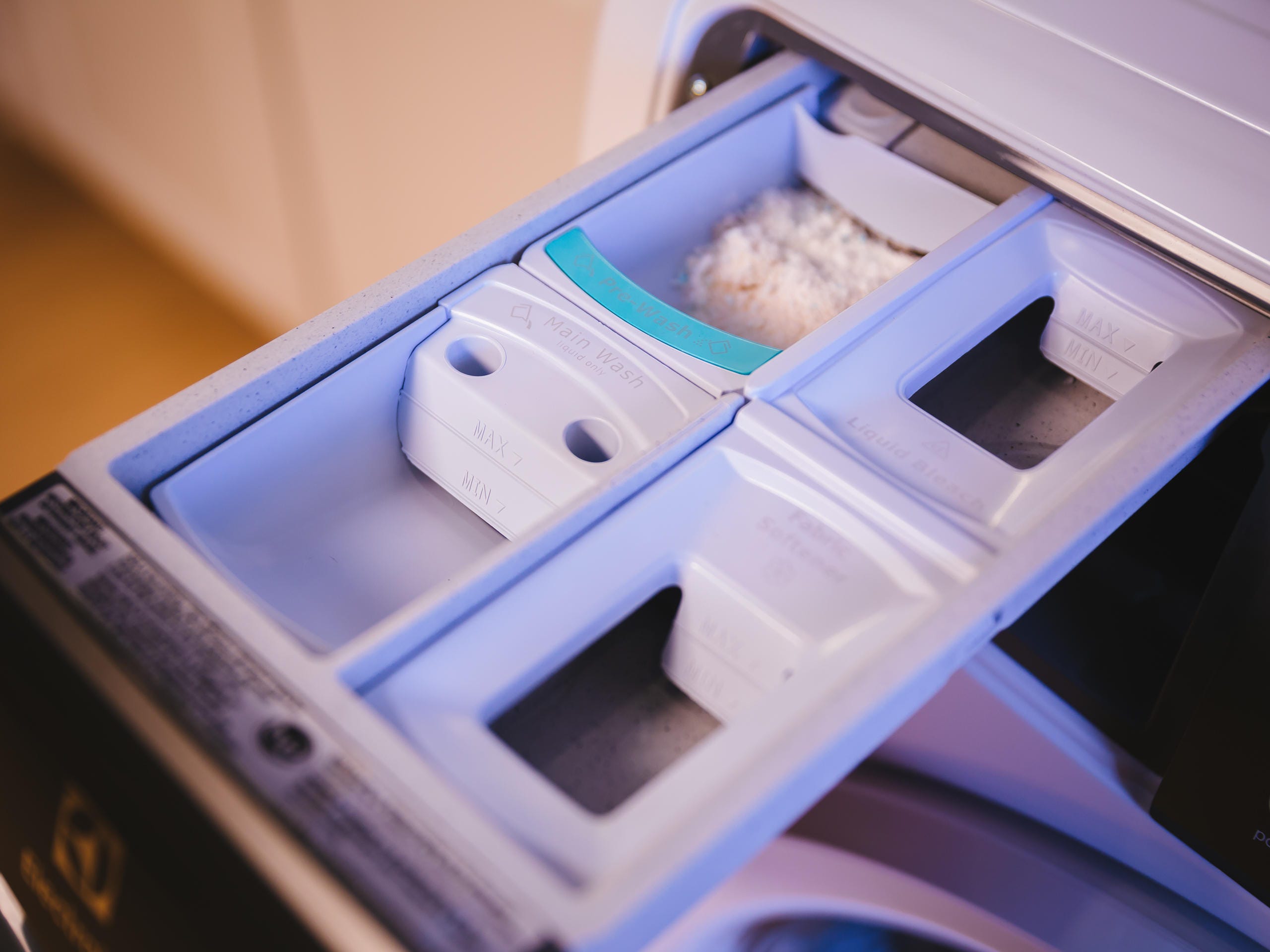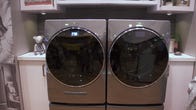
Clean your washer regularly to prevent mold and mildew growth.
Chris Monroe/CNETDoing laundry may seem simple. Add clothes, detergent and push "Start" on your washing machine. Then, voilà -- clean clothes. But you may not know that your clothes could be spinning in bacteria. And if you only use the cold-water setting, your washer is even more likely to grow mold. Or if you leave your machine lid closed, or don't dry it you may also have hidden bacteria growing.
You may start to worry about mold and mildew if your laundry room and clothes may both start to have a sulfur smell. You may wonder where the rotten egg smell is coming from. It may be time to give your washing machine a deep cleaning or eliminate the mildew inside your high-efficiency washing machine.
On the bright side, you don't have to live with that smell. There's a way to get rid of it and keep it from happening again. I'll walk you through a few steps to prevent your washing machine from being a home for bacteria and how to kill mold that may already be there. We've updated this story.
Wipe it down
After you're finished using your washing machine for the day, make sure you wipe down any part of the washer that is damp. This includes the lid, drum, door, rubber gaskets and detergent dispenser (if your machine has that feature). Keep an old towel on hand just for this purpose.
Leave the door open
Mold grows in dark, moist areas, which is what your washer becomes after you've unloaded the clothes. Leaving the door open helps to ventilate the washer and prevent mold from growing in the first place.
24 unusual things you can clean in your washing machine besides clothes
See all photosRemove wet clothes right away
When you're planning to throw a load of laundry in, make sure you'll be home to remove the clothes when the timer goes off. That means don't start the washer before going to work or bed. Not only does this prevent mold from growing in your washer but also keeps your clean clothes from mildewing.
Clean the seals frequently
While mold contamination can happen in any washer, it's especially common in high-efficiency (aka HE) front-loading washers. That's why you should regularly wash the gaskets and seals around the door. The gaskets make sure water doesn't leak out around the door and also do a good job sealing in the moisture that can help mold grow. Make sure you dry the seals along with the rest of your washer to prevent moisture from sticking around.
Use HE powder detergent (not too much)
Liquid detergents can leave a residue in your washing machine, giving mold a food source. So the first thing to keep mold in check is to make sure you're using a laundry detergent made specifically for your HE washer, which will produce fewer suds. (Look for the letters HE on the soap container.) The next step is to steer clear of the liquid and switch to powder detergent or pods. And whichever you choose, make sure you're using only as much as you need to wash your clothes. If you use too much, your clothes may have a smell and residue that may not really clean your clothes.

If you're using an HE washer, it's best to use a detergent that is made for HE washing machines.
Taylor Martin/CNETHow to kill mold that's already in your washing machine
If you've got mold, here's how to get rid of it.
1. Start by putting on gloves and grabbing an old towel that you don't care about.
2. Mix a solution of either bleach and hot water or vinegar and hot water. Never mix bleach and vinegar together, as it creates a chlorine gas that can be harmful to you.
3. Dip the towel in the mixture and start scrubbing away any visible mold. Make sure you hit the detergent dispenser and around the gaskets.
4. If there's a gasket around the door (front-load washers have them), carefully and thoroughly clean and dry it, including all the folds.
5. Run a wash cycle on the hottest setting your machine offers with a cup of bleach or vinegar. If using bleach, pour it in the compartment designated for bleach. If using vinegar, pour it in the detergent slot. If your machine has a clean cycle, you can use that setting. This should kill any hidden mold that you may have missed.
6. Next, use another old towel and wipe away all the moisture in your washing machine. This includes the drum, dispensers, seals and any other areas you can reach.
7. Last, leave the door to your washer open to allow air circulation to dry out any parts you missed. Doing this monthly will help prevent mold growth.
Once, you've cleaned your washer, it's time to move on to the rest of your house. Start with the bathroom: Here's how to clean your showerhead, a simple one-hour science hack for degunking -- and how to unclog a toilet without a plunger.
"machine" - Google News
August 17, 2021 at 06:00AM
https://ift.tt/3m8yMZD
Mold and mildew may be in your washing machine. How to remove the icky, smelly bacteria - CNET
"machine" - Google News
https://ift.tt/2VUJ7uS
https://ift.tt/2SvsFPt
Bagikan Berita Ini
















0 Response to "Mold and mildew may be in your washing machine. How to remove the icky, smelly bacteria - CNET"
Post a Comment